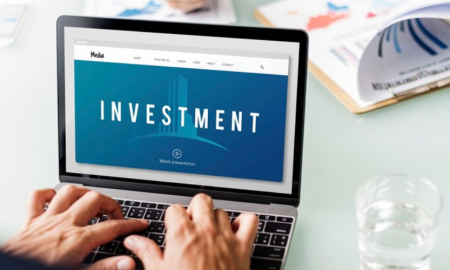
The 10 Best Investments to Consider in 2024

The past year surprised many with a resilient stock market that defied expectations, even amidst rising interest rates and potential recessionary fears. While the coming year might be shrouded in some uncertainty, with some analysts predicting a recession and others anticipating a slower but ongoing economic growth, various opportunities still exist for savvy investors, especially those with a long-term perspective.
Why Invest?
Investing empowers you to:
- Generate additional income: Supplement your salary, build a passive income stream, or fund your retirement.
- Grow your wealth: Watch your money flourish over time, outpacing inflation and increasing your purchasing power.
- Achieve financial goals: Whether it’s a dream vacation, a child’s education, or a comfortable retirement, investing can help you get there.
Balancing Risk and Reward

Freepik | High returns often mean higher risks. Before you start, make sure your finances are secure.
The potential for higher returns often comes hand-in-hand with increased risk. Before diving in, ensure your financial footing is secure, with manageable debt levels, an adequate emergency fund, and the ability to weather market fluctuations without needing immediate access to your investments.
The good news? You have a wide array of options, from the security of CDs and savings accounts to the potential growth offered by stock index funds. This diversity empowers you to craft a portfolio that aligns with your risk tolerance and financial objectives.
The Investment Landscape: Top 10 Picks for 2024
1. High-Yield Savings Accounts
Earn interest on your cash with these online accounts, offering a readily accessible and FDIC-insured option. They’re ideal for short-term savings goals or emergency funds, but be mindful that inflation might erode their purchasing power over time if rates are too low.
2. Long-Term Certificates of Deposit (CDs)
Lock in a higher interest rate than a savings account by committing your money for a specific period. Ideal for retirees seeking steady income or risk-averse individuals who can tolerate some limitations on access to their funds. Keep in mind that reinvestment risk exists, as future rates might be lower when your CD matures, and you might miss out on potentially higher returns elsewhere if interest rates rise.
3. Long-Term Corporate Bond Funds
As corporations seek funding, they issue bonds, which can be packaged into funds that own a diverse range of such bonds. Long-term bonds (maturing in 10+ years) might be an attractive option in 2024, as interest rates are expected to fall.
These funds suit investors seeking income, like retirees, or those aiming to reduce portfolio risk while still earning returns. However, they’re not FDIC-insured, and there’s always the chance of a company defaulting, potentially impacting the value of your investment.
4. Dividend Stock Funds
Companies often distribute a portion of their profits to shareholders through dividends. These funds bundle dividend-paying stocks into a single, convenient investment. They appeal to various investors, especially those seeking income. Remember, individual stock selection requires more expertise, but diversification through a fund mitigates some risks.
5. Value Stock Funds

Freepik | Value Stock Funds are safer due to lower valuations compared to other stock funds.
These funds target undervalued stocks, potentially offering bargain opportunities. They might be suitable for investors comfortable with stock market volatility and a long-term investment horizon (3-5+ years). While generally safer than other stock funds due to their lower valuations, they still fluctuate more than safer options like short-term bonds.
6. Small-Cap Stock Funds
These funds invest in smaller, less established companies with the potential for significant growth. While they can deliver substantial returns over time, they also carry a higher risk due to the inherent volatility of smaller companies. This option is best suited for investors with a long-term outlook (3-5+ years) and a tolerance for risk.
7. REIT Index Funds
Real Estate Investment Trusts (REITs) offer an accessible way to invest in real estate through publicly traded shares. REIT index funds allow you to own many REITs within a single fund, providing diversification and reducing risk. They’re suitable for income-focused investors, like retirees, who appreciate the potential for both dividend income and long-term capital appreciation.
8. S&P 500 Index Funds
These funds track the performance of the S&P 500, an index encompassing 500 of the largest US companies. They offer broad diversification, making them a great choice for beginners and those seeking long-term growth.
While less risky than individual stock picking, they still involve market fluctuations. Remember, the stock market has historically trended upwards over the long term, but there can be periods of significant short-term volatility.
9. Nasdaq-100 Index Funds
This option focuses on the 100 largest non-financial companies listed on the Nasdaq exchange, offering exposure to the biggest names in tech. It’s ideal for investors seeking growth potential in the tech sector, but be prepared for significant volatility, as tech stocks tend to be more susceptible to market swings.
10. Rental Housing

Freepik | Owning rental properties is profitable but needs active management and has risks.
Owning rental properties can be a lucrative investment, but it requires active management and carries inherent risks. You’ll need to find suitable properties, secure financing, handle maintenance, and deal with tenants. While potentially offering substantial returns and steady cash flow over time, it’s not a passive investment and demands significant effort.
Choosing the Right Investments for You
Selecting the most suitable investments hinges on several factors, including:
- Risk tolerance: How comfortable are you with potential losses?
- Time horizon: When will you need the money?
- Investment knowledge: How familiar are you with different investment options?
- Financial situation: How much can you invest?
Crafting a Balanced Portfolio
The best approach often involves a diversified portfolio encompassing various asset classes, such as stocks, bonds, and real estate. This helps mitigate risk by spreading your investments across different sectors, reducing the impact of any single asset class experiencing a downturn.
There’s no one-size-fits-all investment strategy. The key is to understand your individual circumstances, risk tolerance, and financial goals to make informed investment decisions that align with your long-term plans.
Taking the First Step
Ready to embark on your investment journey? Opening a brokerage account is the first step. Many online platforms offer user-friendly interfaces and commission-free trades, making investing more accessible than ever before.
Investing is a marathon, not a sprint. By staying disciplined, informed, and focused on your long-term goals, you can navigate the ever-evolving market landscape and potentially build a brighter financial future.
More in Big Bank Accounts
-
`
Curious About Travis Kelce’s Net Worth? Here’s the Scoop!
Travis Kelce’s name echoes through NFL stadiums, synonymous with athletic prowess and electrifying plays. But beyond his touchdown celebrations and record-breaking...
June 10, 2024 -
`
Everything You Need to Know About an Assumable Mortgage
What is an Assumable Mortgage? Whether you are a buyer or a seller, understanding the concept of assumable mortgages can open...
June 6, 2024 -
`
Layoff vs. Fired – Understanding the Crucial Differences
When it comes to job loss, understanding the distinction between being layoff vs. fired is crucial. While both situations result in...
May 30, 2024 -
`
When Are Business Taxes Due 2024? Essential Dates and Deadlines
Tax deadlines can be daunting, but fear not! Let’s break down everything you need to know to stay on top of...
May 22, 2024 -
`
How Much Does Jeff Bezos Make Per Hour? It’s More Than You Think!
Jeff Bezos, a name synonymous with innovation and wealth, stands as one of the world’s richest individuals. While Bernard Arnault and...
May 16, 2024 -
`
What is Portfolio Investment Entity (PIE) and How Can it Benefit You?
In the intricate world of finance, individuals seek avenues to optimize their investments while minimizing risks. One such avenue gaining traction...
May 9, 2024 -
`
What is a Bank Statement? Understanding its Definitions, Benefits, and Prerequisites
Ever wondered where your money goes? A bank statement is like a financial report card, giving you a clear picture of...
April 30, 2024 -
`
Branded Content: A Genuine Way to Connect With Your Audience
Have you ever binge-watched a series on Netflix, only to later realize that the beverage everyone’s sipping on is that brand...
April 23, 2024 -
`
What Car Does Jeff Bezos Drive? Find Out Inside His Exclusive $20 Million Collection
Have you ever wondered what car does Jeff Bezos drive? This man’s tastes in vehicles are as expansive as his business...
April 17, 2024















You must be logged in to post a comment Login